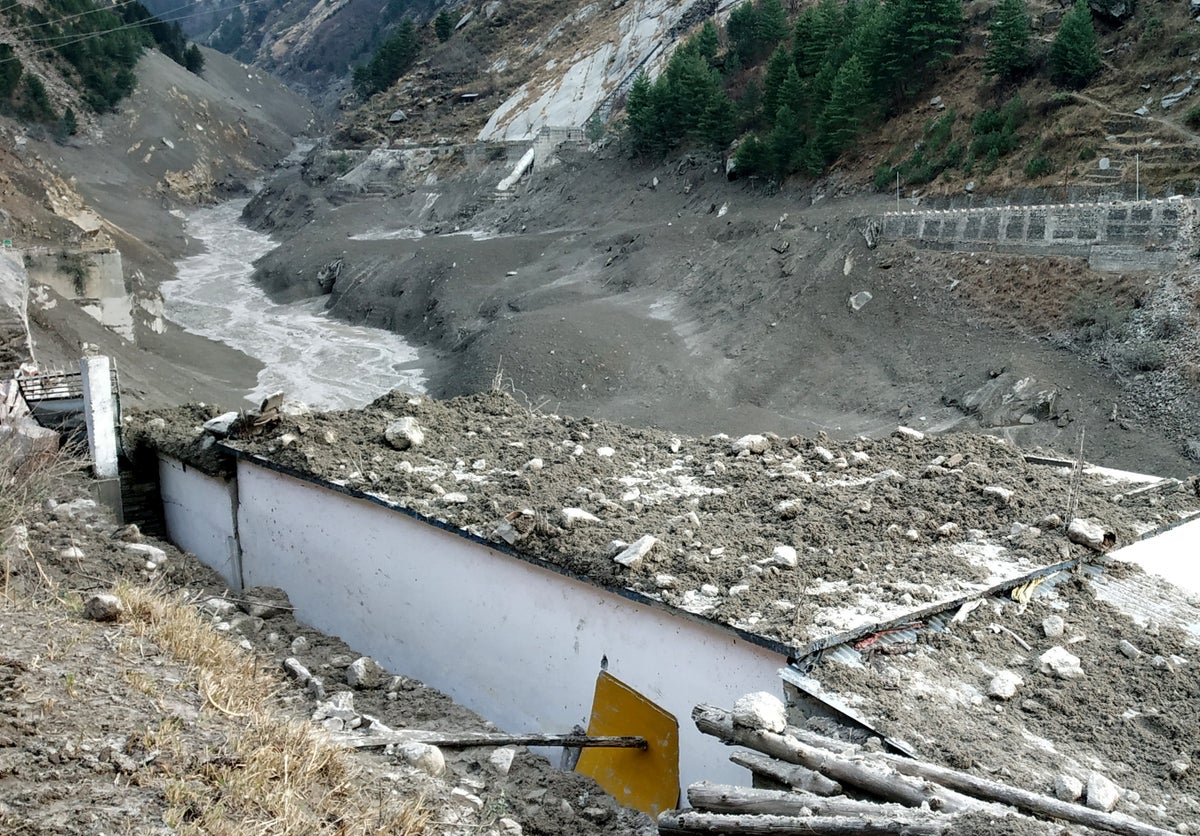
Up to 150 people are feared dead after a mountain glacier in the Indian Himalayas broke away, sending a deluge of water and debris crashing into nearby dams and homes.
The devastation was triggered by a portion of the Nanda Devi glacier breaking off, which sent water and mud trapped behind it surging down the mountain and damaging two hydropower projects where dozens of staff were working.
Vivek Pandey, a spokesperson for the Indo Tibetan Border Police, said at least 150 people were working at the two power plants. Nine bodies were recovered near a tunnel of the Dhauliganga project, where at least 30 workers remained trapped.
Om Prakash, chief secretary of Uttarakhand, said 100 to 150 people were feared dead but the death toll has yet to be confirmed with 140 staff still missing on Sunday night.
More than 2,000 members of the military, paramilitary groups and police were taking part in a search-and-rescue operation, with soldiers specialising in mountaineering working into the night under bright halogen lights with the assistance of helicopters.
India’s air force was also readied to help with rescue operations while disaster-response teams were airlifted in to help with relief.
The country’s prime minister, Narendra Modi, tweeted he was “constantly monitoring the unfortunate situation in Uttarakhand”.
“India stands with Uttarakhand and the nation prays for everyone’s safety there,” he added.
Witnesses described a wall of dust, rock and water as an avalanche roared down the Dhauli Ganga river valley in a disaster which experts said appeared to point to global warming.
A hydroelectric plant on the Alaknanda was destroyed, and a plant under construction on the Dhauliganga was damaged, said Mr Pandey.
At least 42 workers were trapped in two tunnels at the Dhauliganga project, though 12 have been rescued by teams with ropes and shovels who dug through debris to reach them.
People inspect the site near the damaged Dhauliganga hydropower project at Reni village in Chamoli district after portion of Nanda Devi glacier broke off in Tapovan area of the northern state of Uttarakhand
(AP)
The region is home to a chain of hydropower projects on several rivers and their tributaries.The floodwaters also damaged houses, said Ravi Bejaria, a government spokesperson, although he had no details on the number and whether any of the residents were injured, missing or dead.
“It all started sometime around 10 in the morning. We heard a bang, which shook our village,” Dinesh Negi, a resident of Raini village, told the Associated Press by phone. He said they watched from high above one of the rivers as the water turned muddy and surged in a torrent.
“We knew something wrong had happened,” Mr Negi said. “We could see the fury of the river.”
Concerns have previously been raised about the impact of power projects along the Alaknanda River and its tributaries.
Uma Bharti, India’s former water resources minister and a senior leader of Mr Modi’s party, criticised the construction of a power project in the area.
“When I was a minister I had requested that Himalaya is a very sensitive place, so power projects should not be built on Ganga and its main tributaries,” she said on Twitter, referring to the main river that flows from the mountain.
Environmental experts also called for a halt to big hydroelectric projects in the state.
“This disaster again calls for a serious scrutiny of the hydropower dams building spree in this eco-sensitive region,” said Ranjan Panda, a volunteer for the Combat Climate Change Network that works on water, environment and climate change issues.
“The government should no longer ignore warnings from experts and stop building hydropower projects and extensive highway networks in this fragile ecosystem.”
Scientists have long known that global warning is contributing to the melting and the breakup of the world’s glaciers. Anjal Prakash, research director and adjunct professor at the Indian School of Business who has contributed to UN-sponsored research on global warming, said that while data on the cause of the disaster was not yet available, “this looks very much like a climate change event”.
In 2013, more than 1,000 people were killed in Uttarakhand after heavy rains triggered landslides and floods, washing away thousands of houses.
Additional reporting by agencies
Related posts:
Views: 0
 RSS Feed
RSS Feed

















 February 8th, 2021
February 8th, 2021  Awake Goy
Awake Goy  Posted in
Posted in  Tags:
Tags: 
















